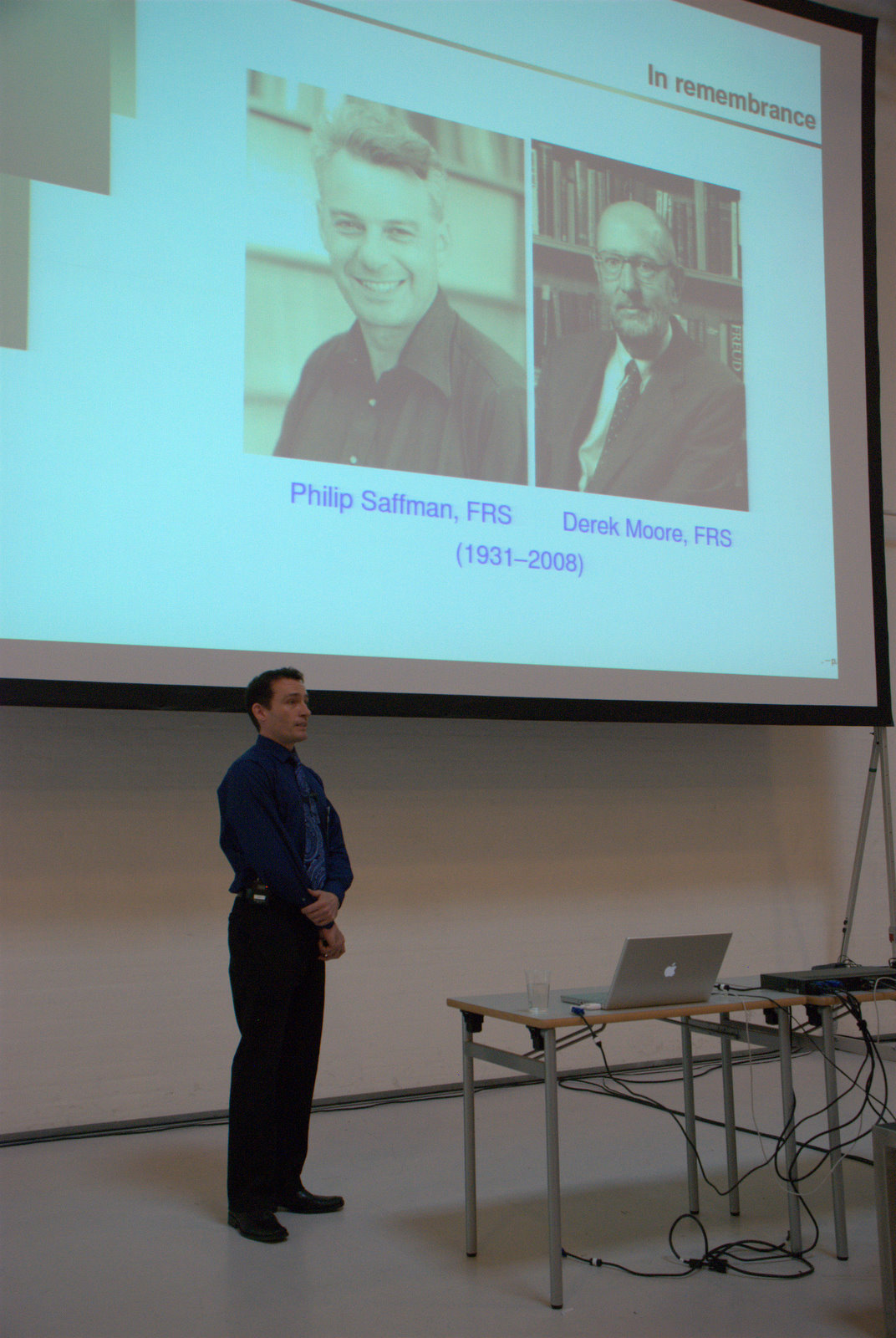A
new calculus for two dimensional vortex dynamics
This page contains files accompanying a keynote lecture I delivered at
the IUTAM Conference ''150 Years of Vortex Dynamics'' in Copenhagen, October
2008.
www.fluid.dtu.dk
The conference celebrates the sesquicentenary of Helmholtz' classic 1858
paper which, arguably, gave birth to the subject of vortex dynamics.

Summary
The focus of the lecture is to give a natural extension to the mathematics typically taught in a first undergraduate course on inviscid fluid dynamics. In such a course, students learn about the notion of a ''complex potential'' and then, having identified complex potentials associated with basic flow singularities, can construct flows of interest by superposing these basic complex potentials. Often, flows are considered involving a single obstacle (or island, or solid object). For example, the complex potential w(z) for steady uniform flow with speed U in the x-direction past a cylindrical object (of unit radius) is well-known to be
w(z) = Uz + U/z
where
z=x+iy.
But what is the analogous result for uniform flow past two cylindrical
obstacles? Or three (or more)? These questions are simple and natural.
But, perhaps surprisingly, the fluid dynamics literature on such basic
extensions is, at best, patchy.
This lecture gives a mathematical framework, a calculus, for writing down
such complex potentials when any number of obstacles is involved. The
lecture, and associated paper, are meant to constitute a ''user's guide''
to this calculus. The calculus itself is easy to use. Understanding why
it works is more involved and the interested reader should refer to my
original publications
on this topic for more information.
The Lecture
Here is a copy of my lecture
The Notes
Click here
for a more detailed expository paper
(this will be submitted to the conference proceedings)
Coming soon
To use the calculus in practice only requires the user to be able to evaluate a single special function known as the Schottky-Klein prime function. Soon, this website will feature freely downloadable MATLAB M-files for the evaluation of this function. The software will be based on a numerical algorithm originally expounded by Crowdy & Marshall